Zanflare C4
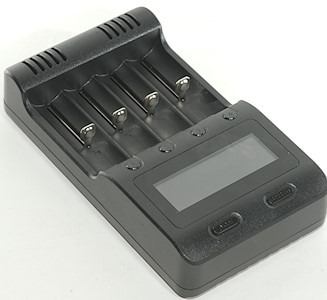
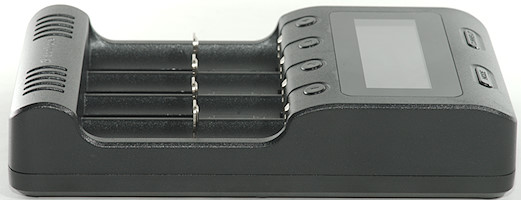
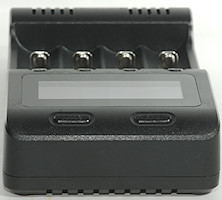
Zanflare is a new name in chargers and starts with an analyzing charger. It can handle LiIon and NiMH at a few different currents. The user interface is very simple and easy.

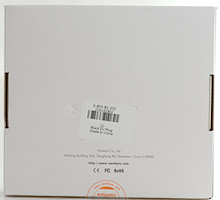
It arrived in a cardboard box with and image of the charger and not much more.

The box included the charger, a mains adapter, a car adapter and the instruction sheet.

The charger has a 12V input and a usb output connection, on the bottom of the charger it says the usb output is rated at 2A.
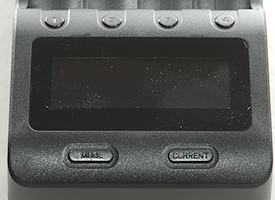
The user interface is a lcd display and 6 buttons.
The 4 round buttons select display for that slot (mA, Volt, mAh, mR(Internal resistance), Time)
The MODE button select between charge, fast test and NOR test.
The CURRENT button select the charger or discharge current depending on mode.
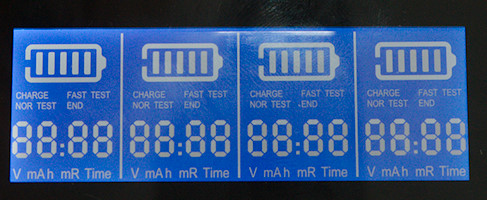
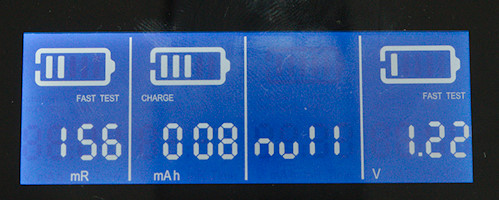
The display is simple and easy to read.

As usual there are specifications on the bottom, but they are not easy to read.

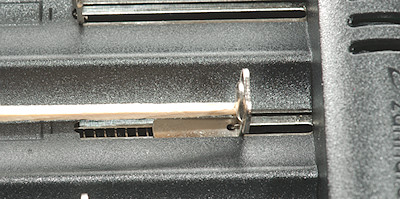
The slots uses the classical slider construction and it works fine.
The slots can work from 30.7 mm to 70.3mm. This means that it will not handle the longest 18650 and 26650


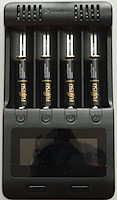

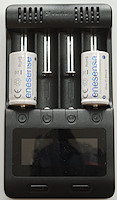
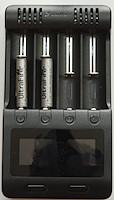
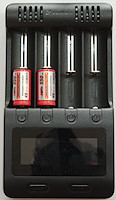
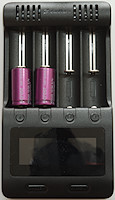
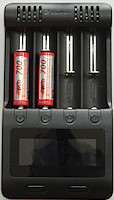

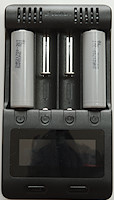
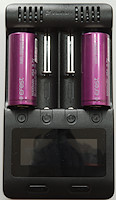
The charger can handle 70 mm long batteries including flat top cells.
Measurements
-
Discharge LiIon battery with 10mA when not connected to power.
-
When power is connected with a full battery, it will charge with about 1mA.
-
Between 0.0V and 2.1V the charger will assume NiMH
-
Above 2.1V the charger will assume LiIon.
-
Minimum voltage reading is about 0.79V
-
Voltmeter is within 0.02V
-
Voltmeter stops updating when charging is stopped
-
Charger will not restart when voltage drops.
-
It will restart charging on reinsertion of the battery or power cycling.
-
Power consumptions when idle without battery is 0.4 watt
Charging LiIon
It is possible to select 300, 500, 700 and 1A in charge current.
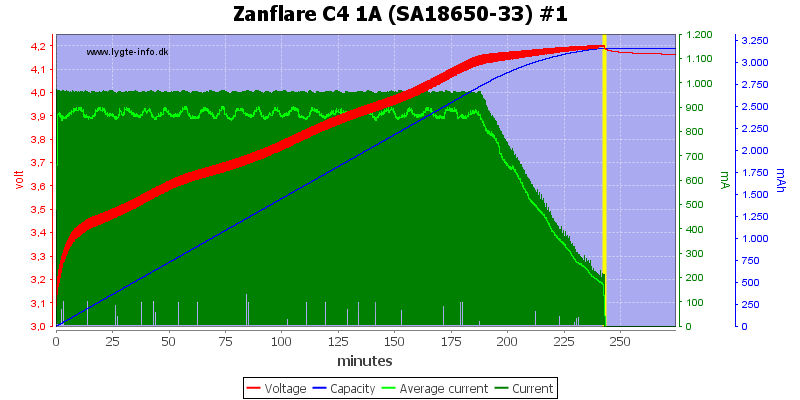
A nice CC/CV charge curve with termination around 200mA. It is probably a simulated CC/CV curve, i.e. the termination current will vary depending on cell.
Display shows 3263mAh 90mOhm 4:02 hours
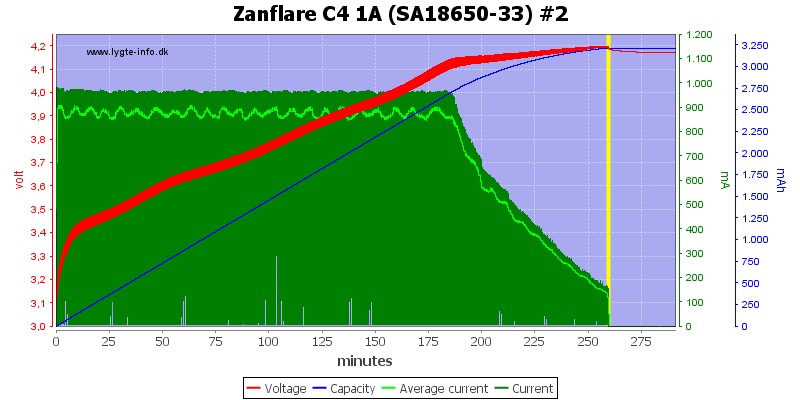
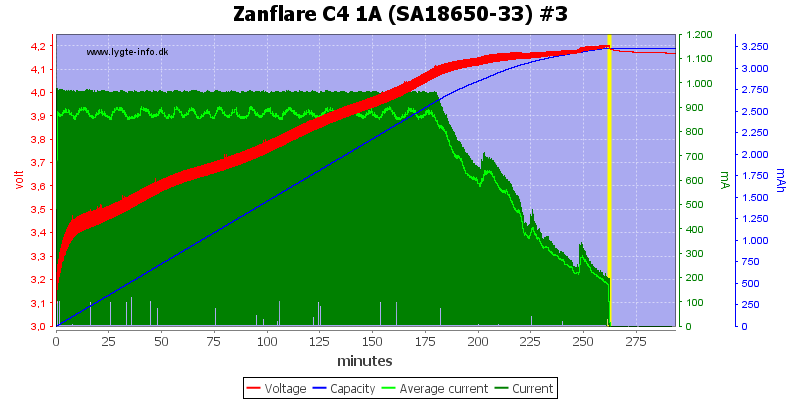
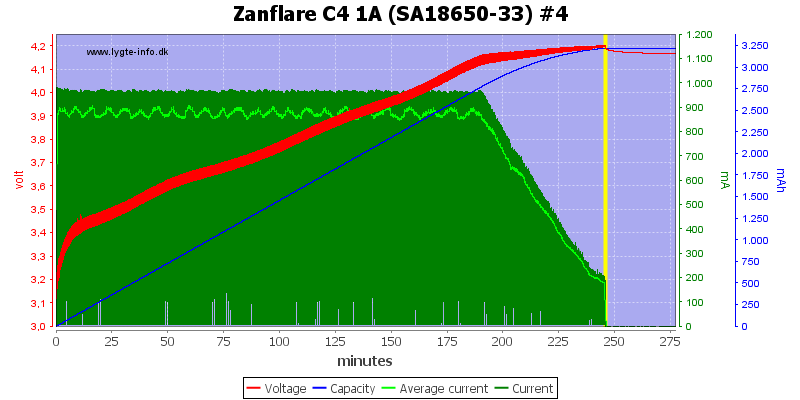
The other channels works the same way.
Display shows 3328mAh 300mOhm 4:19 hours, 3352mAh 364mOhm 4:22 hours, 3327mAh 168mOhm 4:06 hours

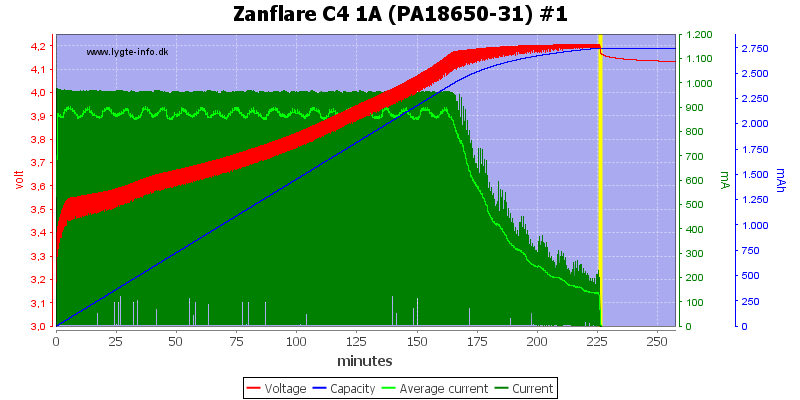
The two other cells also charge as expected.

The old cell is handled very nicely.
Display shows 2316mAh 296mOhm 3:56 hours
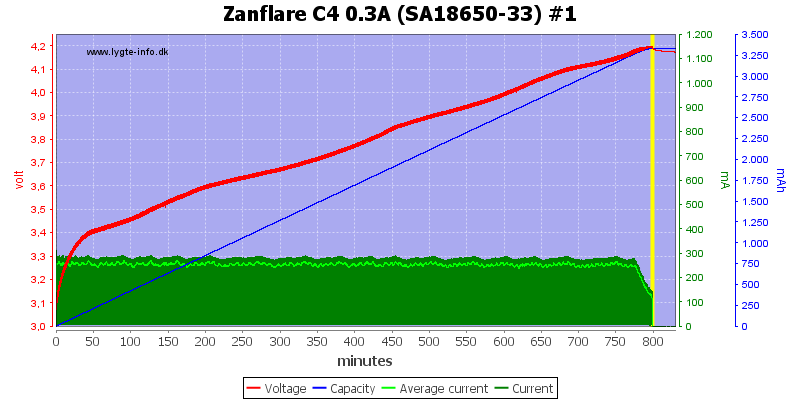
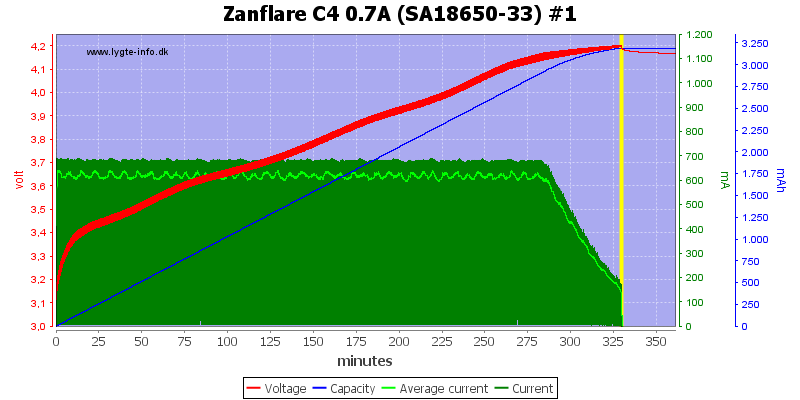
Both 300mA and 700mA looks fine.
Display shows 3419mAh 208mOhm 13:18 hours, 3293mAh 108mOhm 5:29 hours
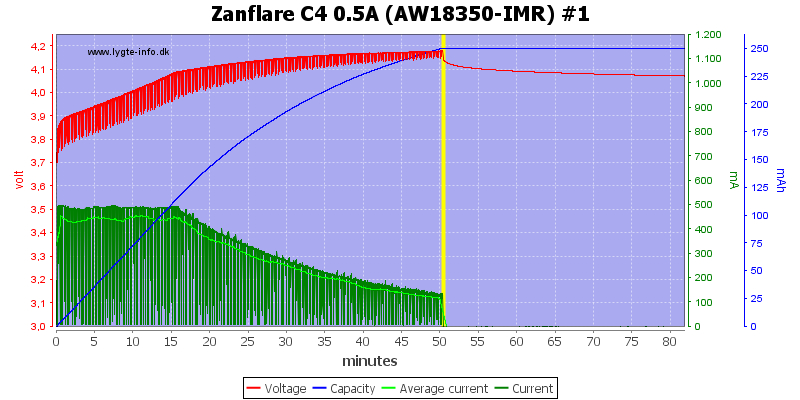
The charger stops a bit early with this old worn down cell.
Display shows 258mAh 494mOhm 0:50 hours
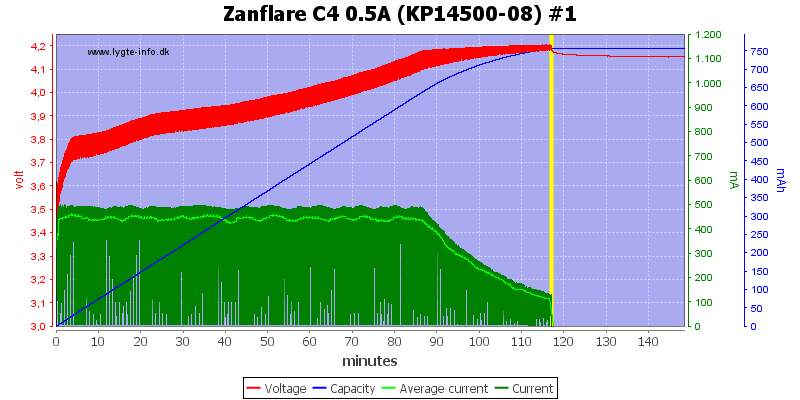
No problem with this cell.
Display shows 777mAh 288mOhm 1:57 hours

No problem charger 4 cells simultaneous.

Or is there, the power supply is rated for 1.5A, but the charger uses 1.7A. Obvious it works fine enough, but the power supply is at the limit for a short time during a charge.
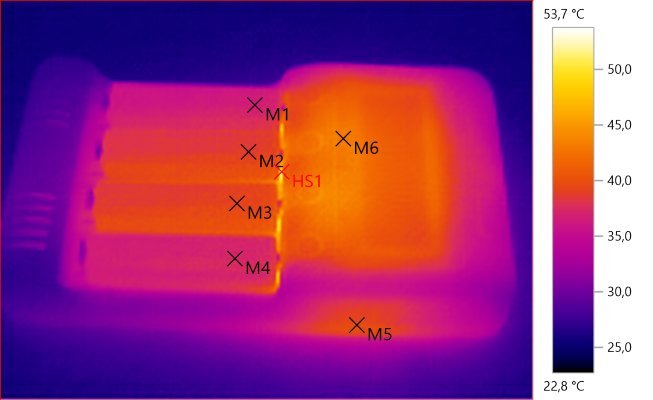
M1: 36,5°C, M2: 38,7°C, M3: 39,2°C, M4: 37,3°C, M5: 39,6°C, M6: 43,3°C, HS1: 53,7°C
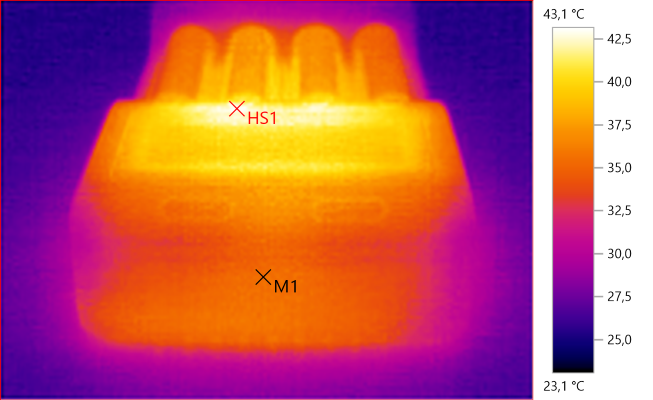
M1: 35,3°C, HS1: 43,1°C

The charger always do a internal resistance check when a battery is put into a slot or when powered on with a battery in it.
When no buttons are pressed it will start charging at 0.5A after about 9 seconds.
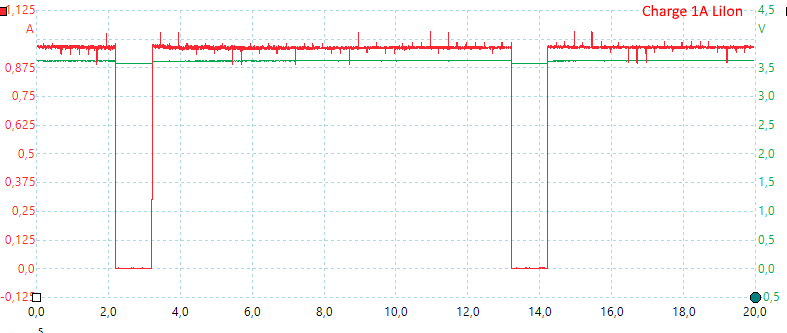
During charge there are pauses to measure voltage.
Fast test of LiIon
It is possible to select 300 or 500mA discharge and charge current.
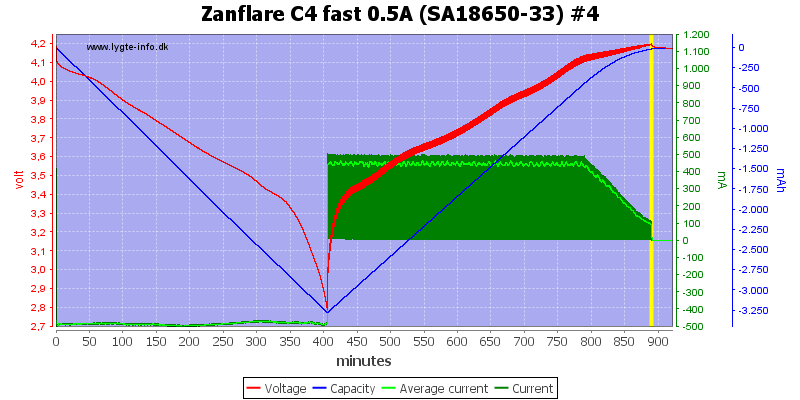
The charge will discharge the battery and then measure how much current is needed to full charge the battery.
Display shows 3379mAh 180mOhm 14:50 hours
NOR test of LiIon
It is possible to select 300 or 500mA discharge and charge current.
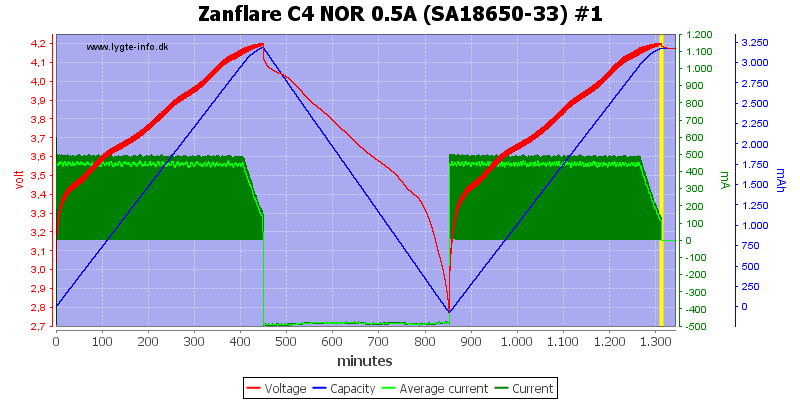
The charge will first charge the battery, then discharge while measuring capacity and finally charge again.
It discharges to about 2.8V with constant current, i.e. no pwm.
Display shows 3369mAh 288mOhm 21:51 hours


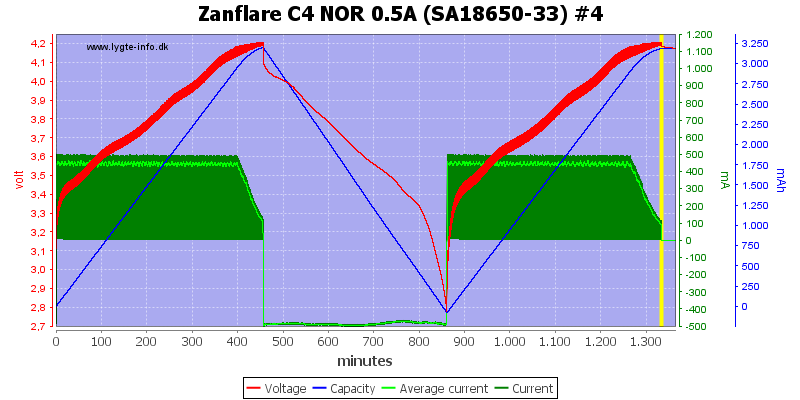
The other channels looks the same.
Display shows 3537mAh 202mOhm 22:41 hours, 3335mAh 120mOhm 21:26 hours, 3403mAh 216mOhm 22:13 hours
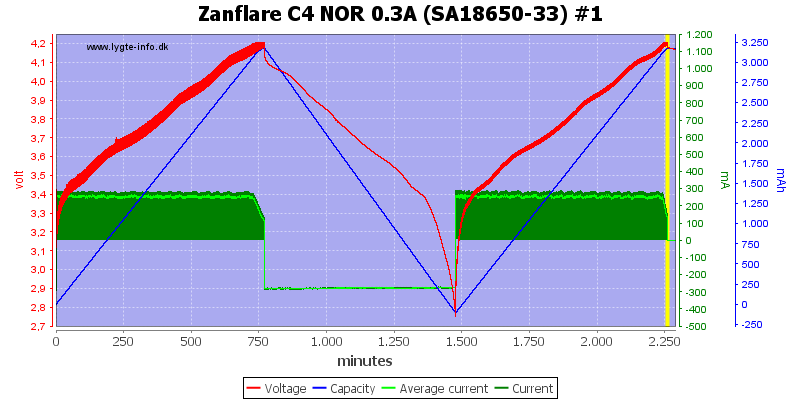
The 300mA setting will reduce both charge and discharge current.
Display shows 3374mAh 572mOhm 37:38 hours
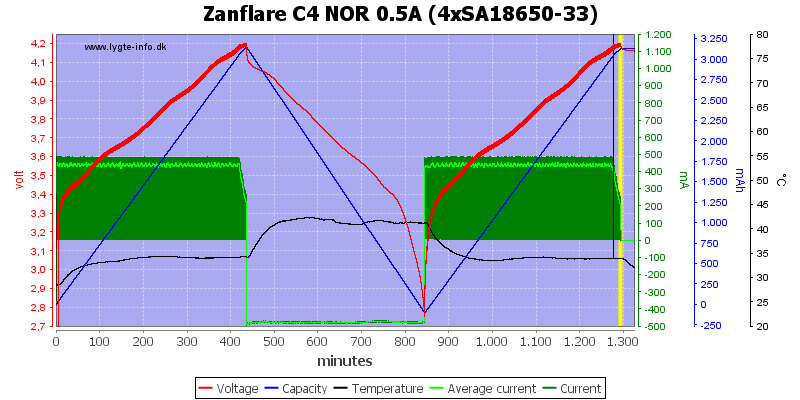
With 4 batteries the temperature will increase when discharging.
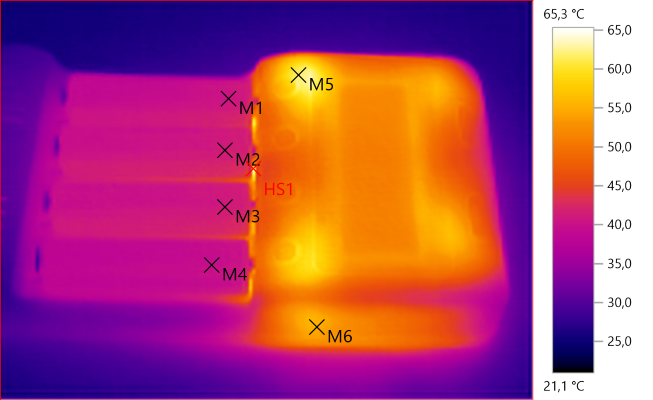
M1: 40,4, M2: 41,2, M3: 41,3, M4: 39,8, M5: 61,7, M6: 55,0, HS1: 65,3
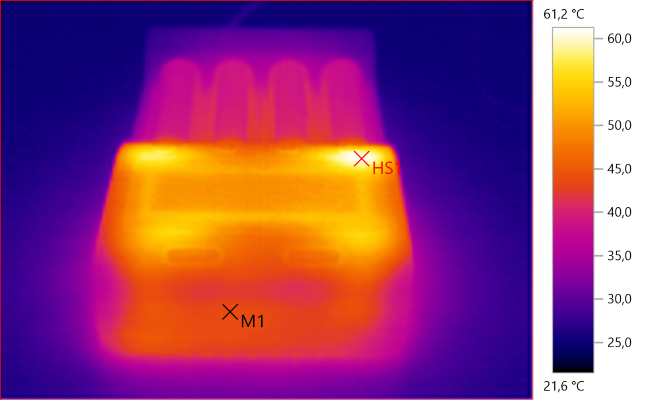
M1: 43,6, HS1: 61,2
Measuring internal resistance of LiIon

The internal resistance measurement looks very stable in values and fairly precise. The resolution looks to be 2mOhm
Charging NiMH
It is possible to select 300, 500, 700 and 1000mA charge current.

With NiMH the charger will terminate on voltage or -dv/dt as can be seen on some of the other curves.
The termination is just about where the battery start developing heat.
Display shows 1904mAh 108mOhm 2:03 hours
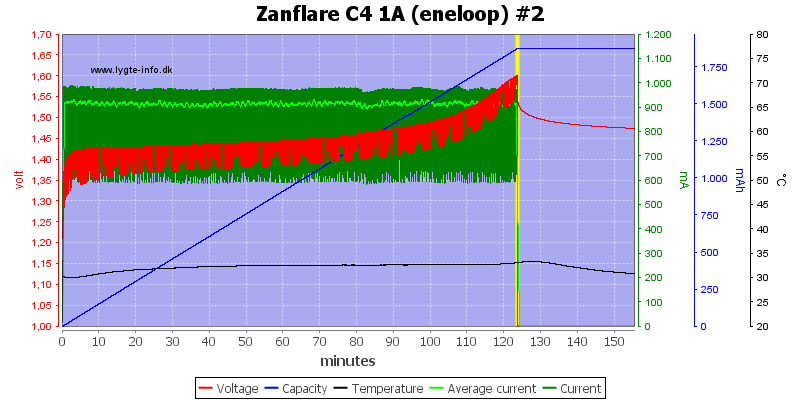
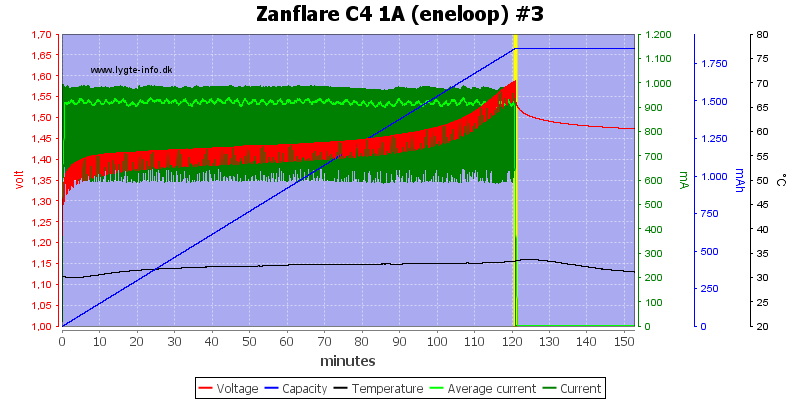
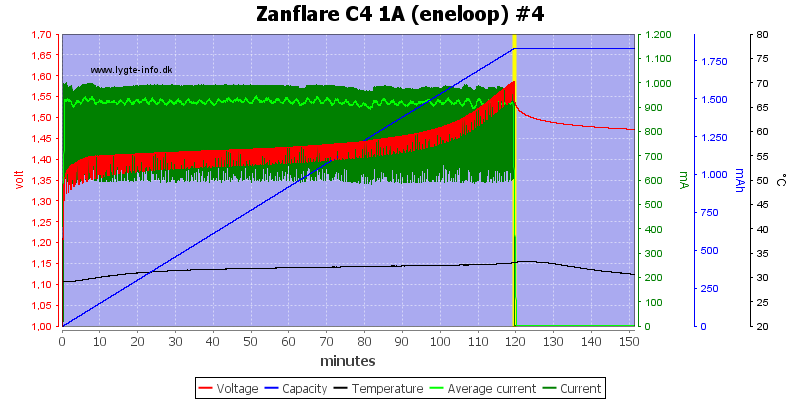
The other 3 channels looks the same.
Display shows 1930mAh 284mOhm 2:03 hours, 1852mAh 180mOhm 2:00 hours, 1847mAh 136mOhm 1:59 hours
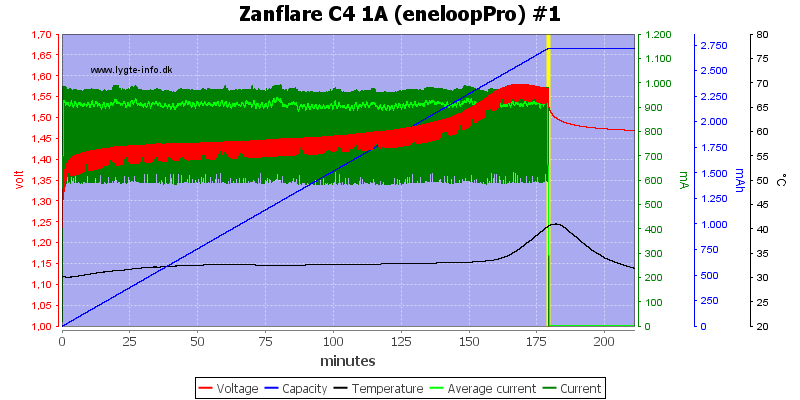
With the pro cell it uses -dv/dt termination.
Display shows 2761mAh 174mOhm 2:59 hours
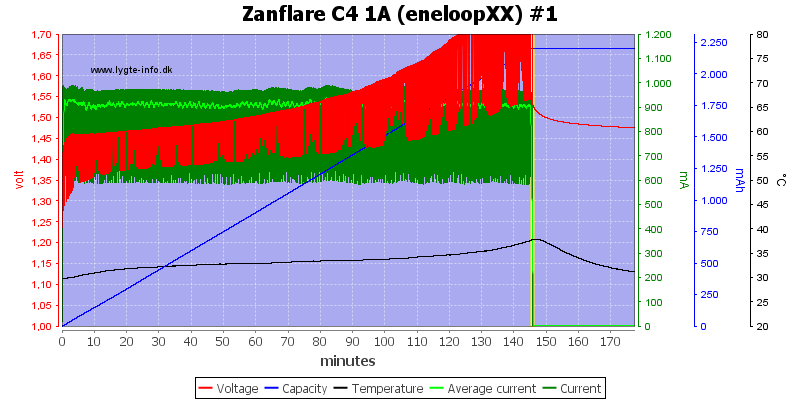
This cell is old and worn down, but it do a very fine job on charging it.
Display shows 1229mAh 316mOhm 2:26 hours
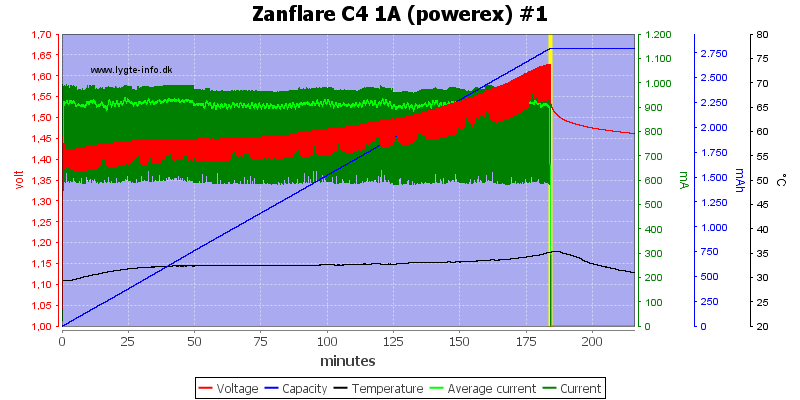
This is also a good charge.
Display shows 2830mAh 566mOhm 0:04 hours
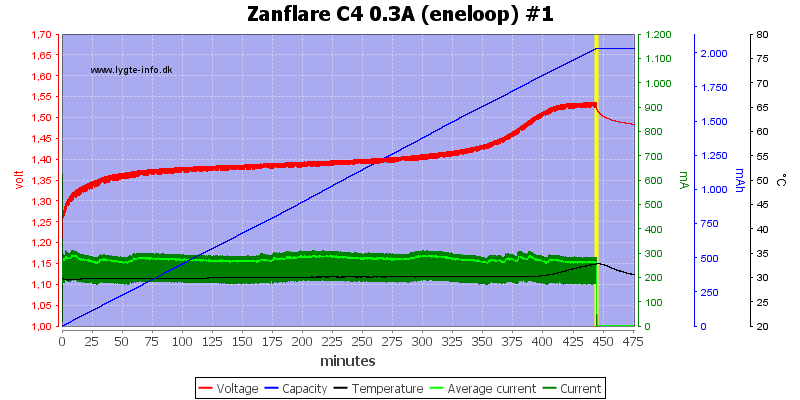
Even at 0.3A it can terminate a NiMH charge, it may use 0dv/dt termination for this.
Display shows 1982mAh 154mOhm 7:24 hours
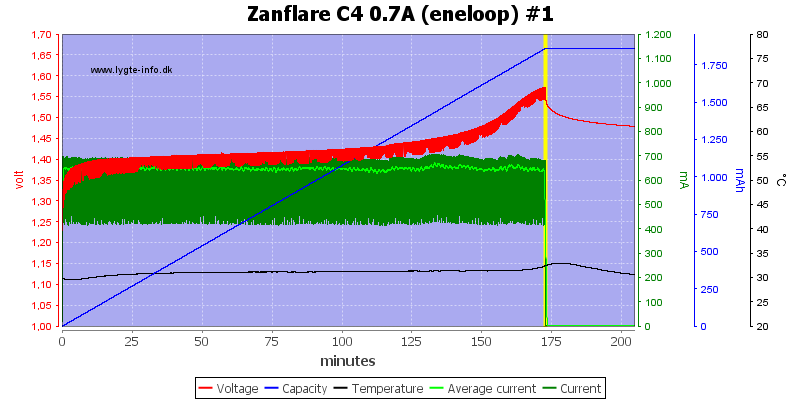
No problems at 0.7A
Display shows 1901mAh 210mOhm 2:52 hours
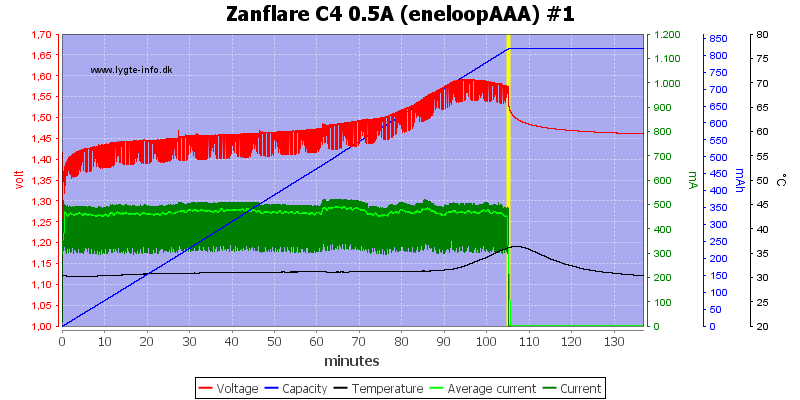
The AAA cell is charged fine at 0.5A
Display shows 808mAh 400mOhm 1:45 hours

It is fast to detect a full cell, it only requires 5 minutes.
Display shows 31mAh 210mOhm 0:04 hours
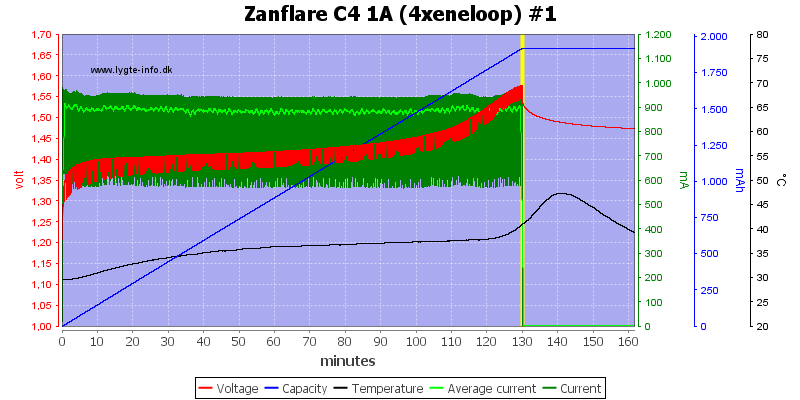
The charge maintain full charge speed with 4 NiMH cells.
Display shows 2025mAh 150mOhm 2:10 hours, 2163mAh 106mOhm 2:20 hours, 2118mAh 96mOhm 2:17 hours, 2108mAh 88mOhm 2:17 hours

It needs about 0.9A from the power supply.
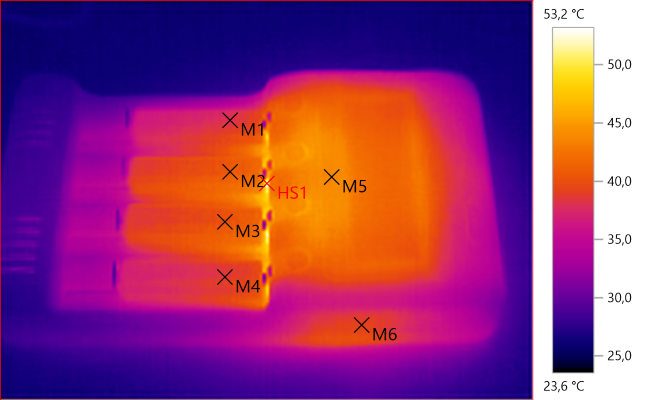
M1: 38,1°C, M2: 40,6°C, M3: 40,3°C, M4: 38,6°C, M5: 43,8°C, M6: 39,1°C, HS1: 53,2°C

M1: 36,0°C, HS1: 44,9°C
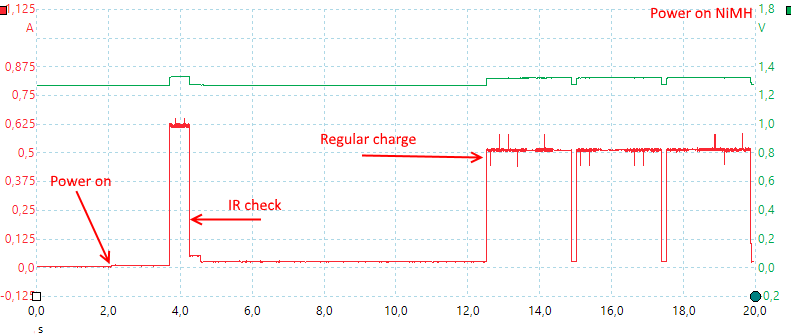
When the charger see a battery it will measure its internal resistance.
It will automatic start charging a NiMH cell about 10 seconds after power is applied. The default current is 0.5A.
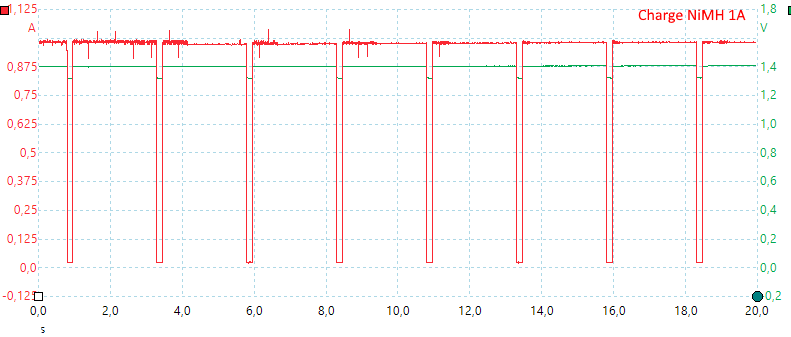
The charger will pause at regular intervals to measure the voltage.
Fast test of NiMH
It is possible to select 300 or 500mA discharge and charge current.
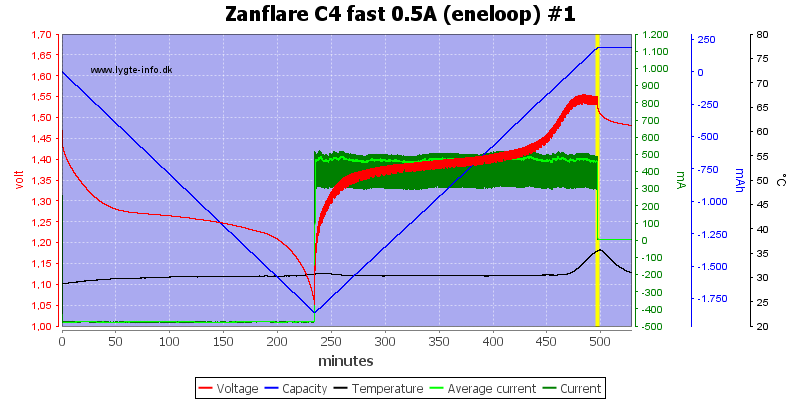
With the fast test it will discharge the battery and then charge it while measuring the charged capacity.
Display shows 2054mAh 82mOhm 8:16 hours
NOR test of NiMH
It is possible to select 300 or 500mA discharge and charge current.
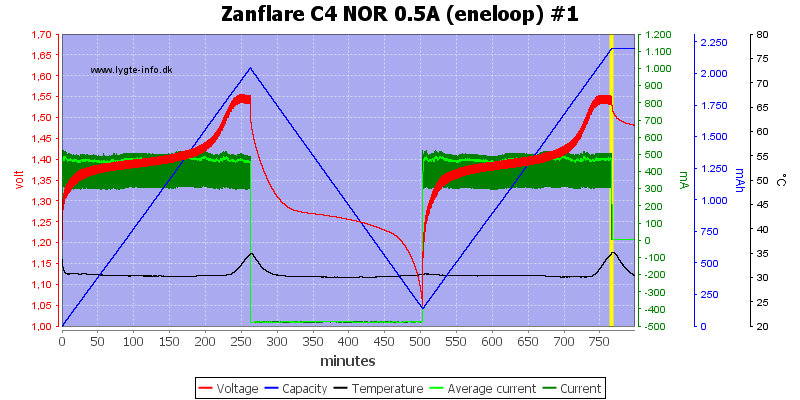
The normal test will first charge the battery, then discharge it while measuring capacity and finally charge it again.
The battery is discharged to about 1.05V
Display shows 2006mAh 330mOhm 12:16 hours
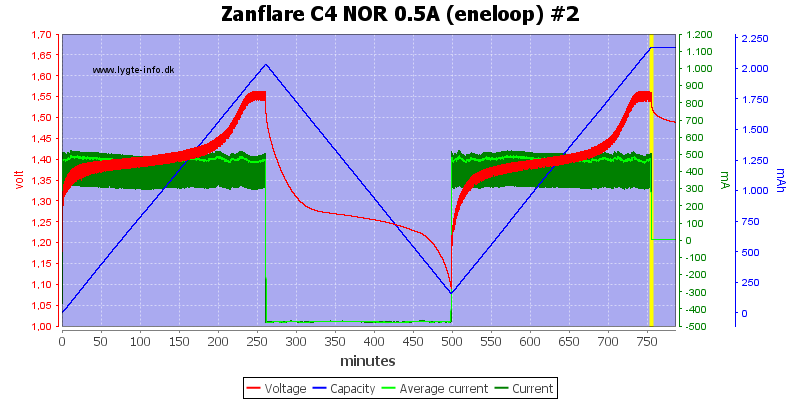


The other 3 slots looks the same.
Display shows 1984mAh 188mOhm 12:34 hours, 2023mAh 160mOhm 12:42 hours, 1988mAh 174mOhm 12:24 hours
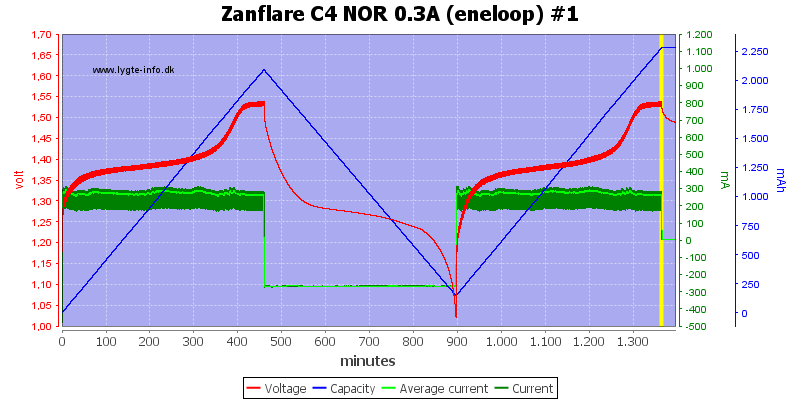
The 0.3A setting will reduce both charge and discharge current.
Display shows 2077mAh 138mOhm 22:43 hours
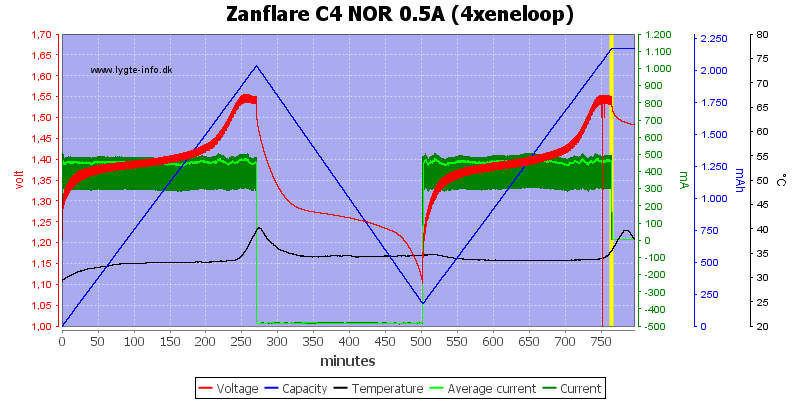
With 4 cells there is not much heat during discharge.
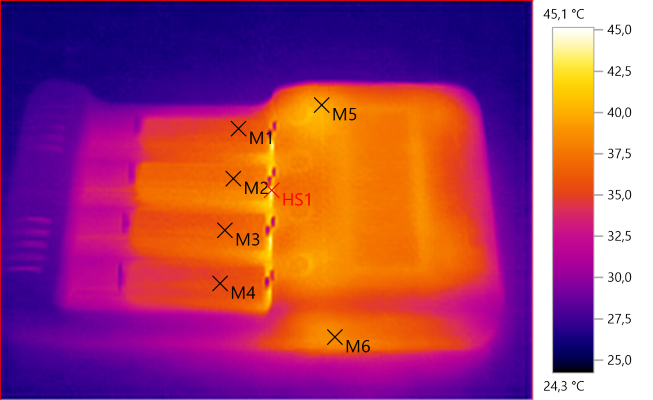
M1: 35,4°C, M2: 37,0°C, M3: 36,6°C, M4: 35,5°C, M5: 39,9°C, M6: 38,5°C, HS1: 45,1°C

HS1: 41,3°C
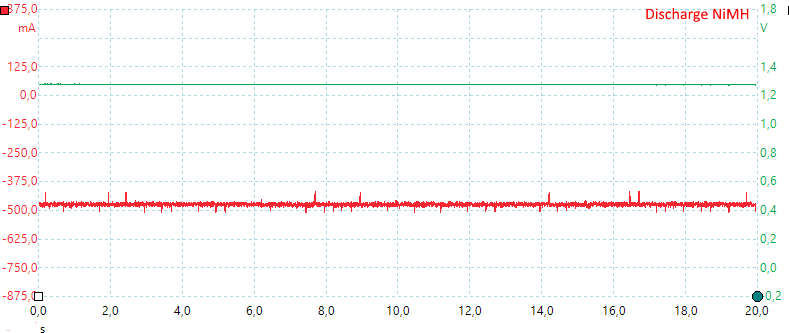
The discharge is with constant current, this curve is rather boring.
Measuring internal resistance of NiMH
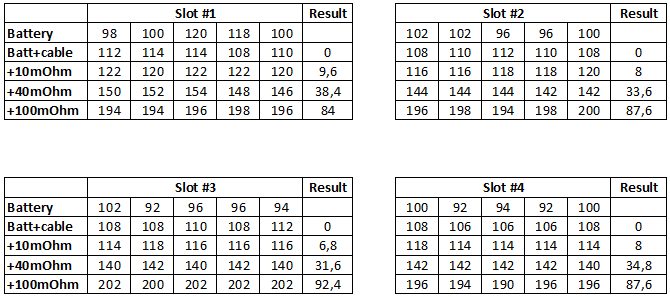
The NiMH internal resistance is also very stable and fairly good.
Power bank function
-
USB output is coded as usb charger (DCP).
-
USB output is turned when loaded, it cannot be turned on with a button press.
-
USB output will turn off 5 seconds after load is dropped below about 60mA.
-
USB output is turned off when charger is powered
-
Discharge LiIon battery with 10mA when not connected to power (Not very good).
-
When battery is down to 2V it will discharge with 7.5mA (Bad).
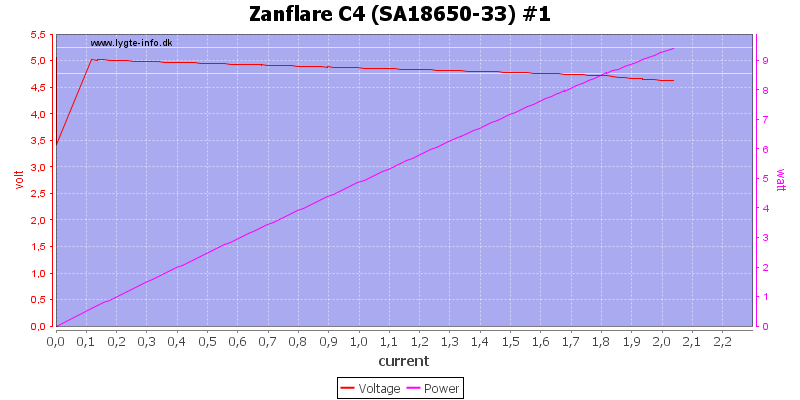
The usb output can deliver the rated 2A, but not much more. The output is slightly low at 2A.
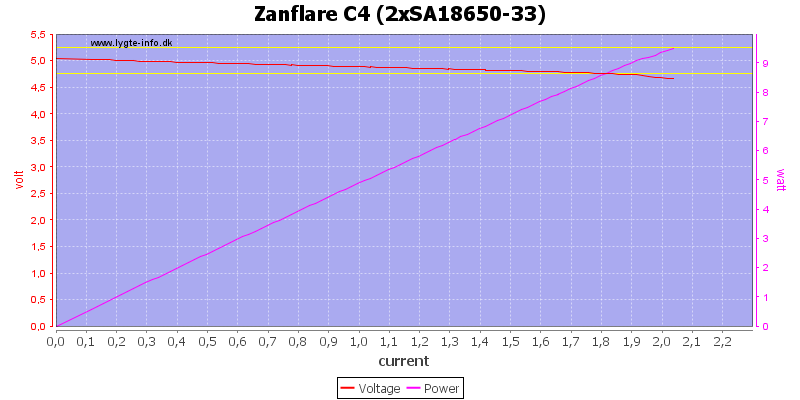
More batteries in the charger do not change the output limit.
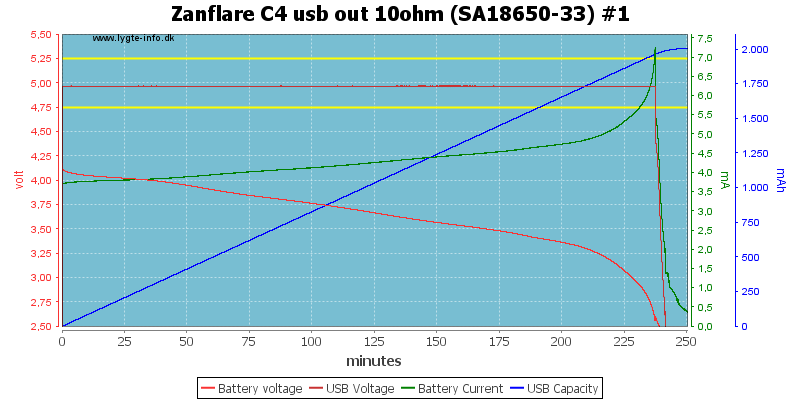
The output voltage is stable at 0.5A and with one battery I got about 4 hours. When the battery is empty the output turns off, but it do not remove all load from the battery, the above recording stopped at 2.4V, but a couple of hours later the battery was down to 2.2xV.
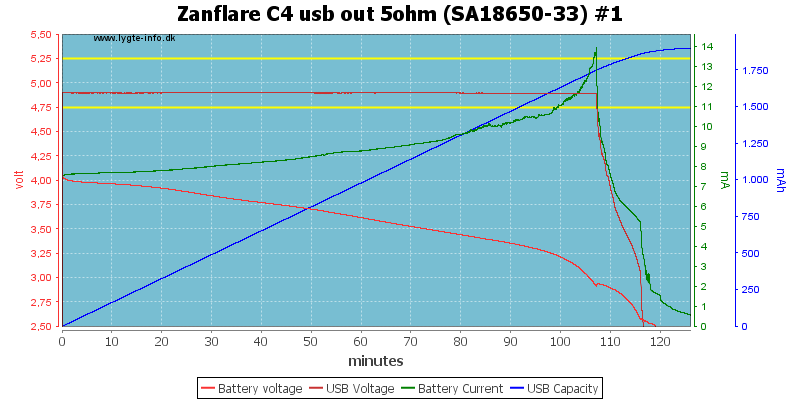
One cell did also handle 1A output fine.
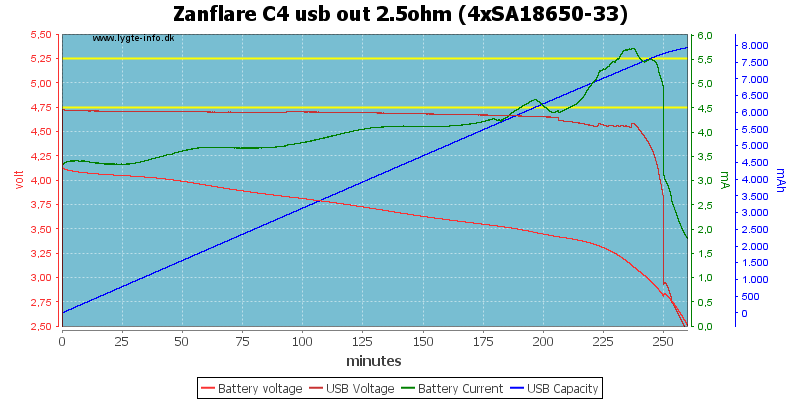
At 2A with 4 cells the output was maintained for about 4 hours.

At 0.5A the noise is 5mV rms and 62Vpp

At about 1A the noise is 28mV rms and 134Vpp
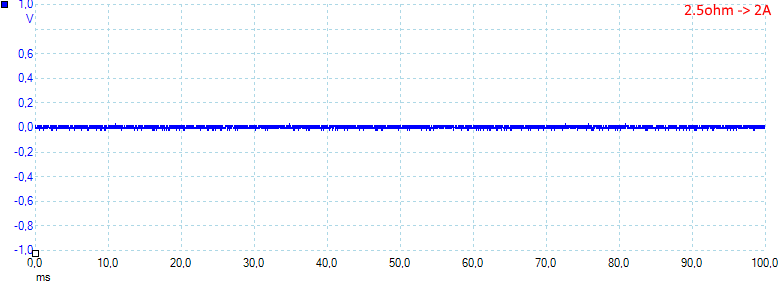
At about 2A the noise is 28mV rms and 144mVpp, this is very good.
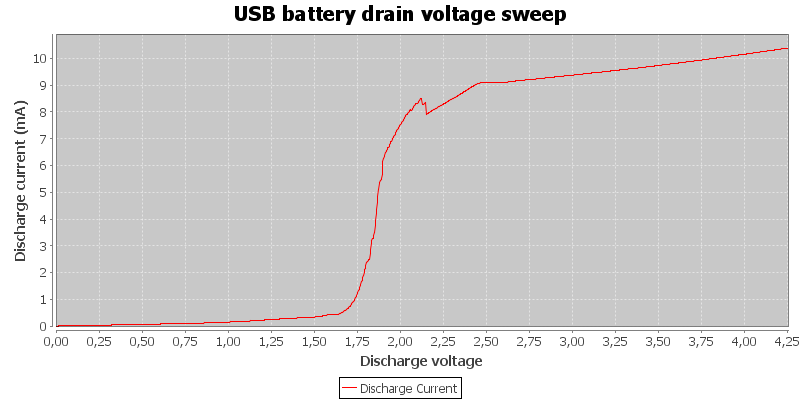
I decided to take a closer look at the battery drain with unloaded usb output. As can be seen the drain goes low at about 1.7V, this is rather low for a LiIon battery.
With the curve I started from 4.25V and over 20 minutes I slowly reduced the voltage.
Testing the power supply with 2830 volt and 4242 volt between mains and low volt side, did not show any safety problems.
Conclusion
The charger does a good job charging both LiIon and NiMH. I like that the test function uses a constant current and the IR function works fine. The mAh display is a bit on the high side.
The usb output can deliver the rated 2A, but it is slightly low in voltage and will discharge battery to a rather low voltage if they are left in the charger.
Generally the charger will drain batteries when it is unpowered, i.e. do never leave batteries in it.
As a charger and analyzer it is good, the usb output works fine, but it discharges batteries too much when used as power bank.
Notes
The charger was supplied by a Gearbest.com for review.
Here is an explanation on how I did the above charge curves: How do I test a charger









